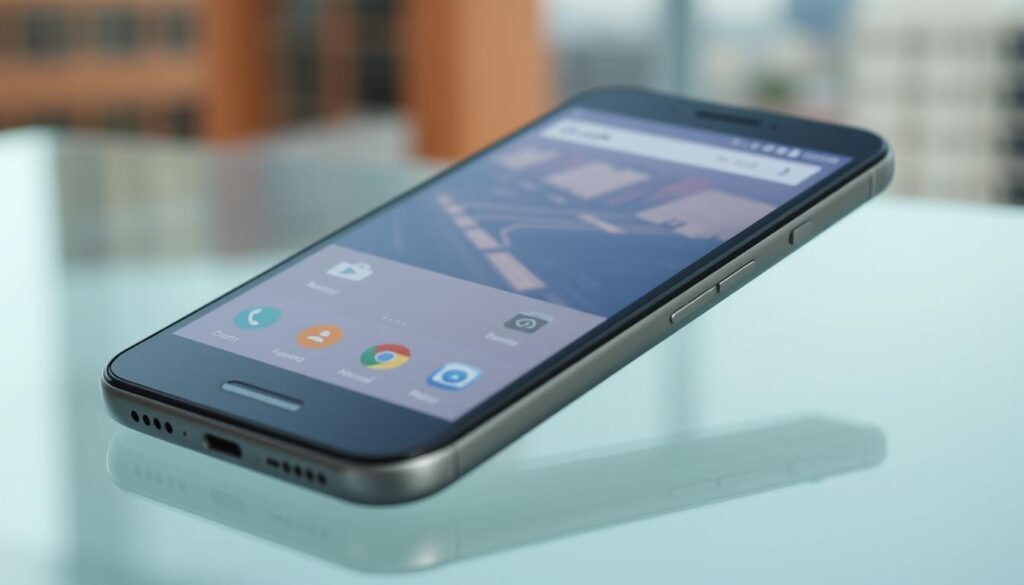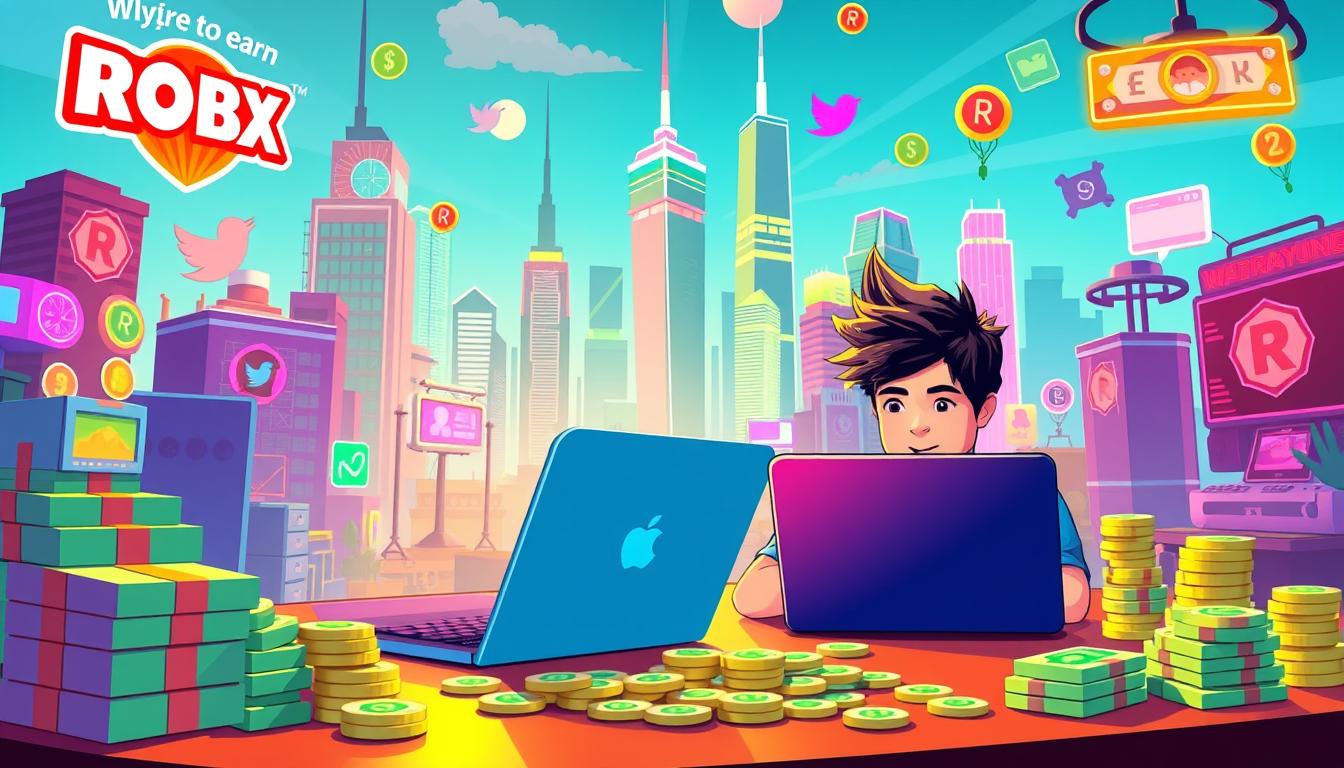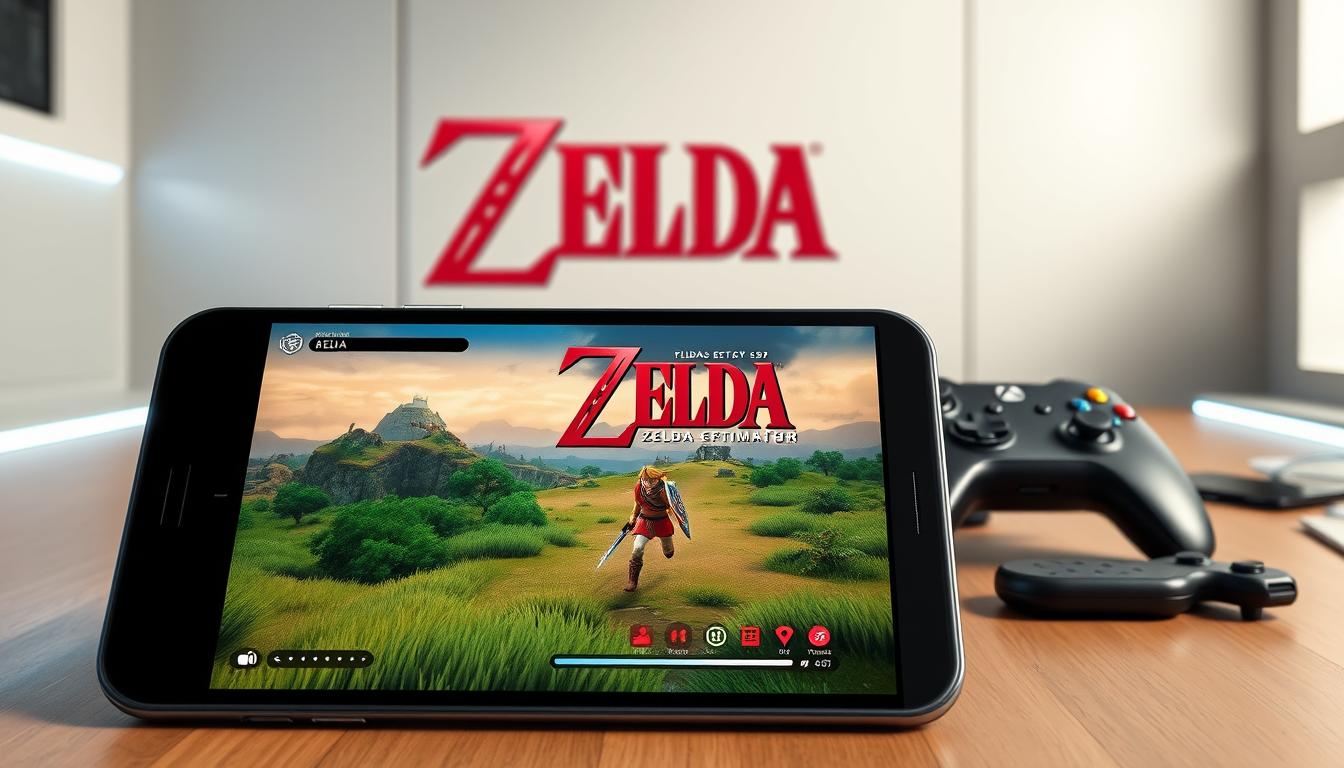Anúncios
Are you having trouble playing the latest games or apps on your budget Android phone? Optimized emulators for low-spec phones can change that. This article shows how Android emulator software can boost your mobile gaming without costing a lot.
We’ll look at different emulators made for budget Android devices. They help overcome the challenges of limited hardware. You’ll learn how to make your Android experience better with these tools.
Introduction to Android Emulators
Android emulators are software that lets users run Android on PCs and other platforms. They are popular among developers, gamers, and regular users. These tools help run mobile apps on PCs, making app testing and use easier.
Anúncios
Using Android emulators helps a lot with testing apps. Developers can test apps without needing a physical device. This makes app development faster. Gamers also get better graphics and performance on bigger screens.

There are many high-quality Android emulators for different needs. They are great for developers and gamers alike. These emulators make it easy to use Android software on PCs.
Anúncios
Understanding the Need for Optimized Emulators
Smartphone app use has grown a lot. This has made users with low-end devices need optimized Android emulators. These devices can’t handle the latest apps’ features. Optimized emulators help by making apps run better on these devices.
These emulators are great for low-end devices because they use resources well. This means apps and games run smoothly. Users can now play games that were only for powerful devices before. Developers also use them to test apps without needing many devices.
Knowing about optimized emulators helps users pick the right apps for their devices. This ensures apps work well on low-end devices. For more tips on running heavy apps on budget phones, see this guide.

Key Features to Look for in Emulators
When looking at emulators, it’s key to check out certain features. Multi-instance support is a big plus. It lets users run many apps or games at once. This is great for gamers with multiple accounts or developers testing apps.
Customization is also important. Options like keyboard mapping help make controls more comfortable. Emulators with high-fidelity graphics can make mobile games feel more real, even on cheaper devices.
Good performance is essential for a smooth experience. A stable emulator works well with different Android versions. This means less crashing and lag. These features help users find an emulator that fits their needs, whether for work or play.
Best Optimized Emulators for Budget Android Devices
Choosing the right emulators for budget Android devices is key. It unlocks the full potential of low-spec smartphones. This section highlights two top Android emulators for efficient performance without spending a lot.
1. BlueStacks: Versatile Gaming Experience
BlueStacks is a top choice for gaming. It lets users run Android games on PCs. Its AI optimizes resources for smooth performance on budget devices.
Users can adjust graphics and enjoy native controls. The BlueStacks Store offers exclusive rewards. Eco mode also saves resources during multitasking.
2. LDPlayer: Compatibility and Stability
LDPlayer is known for its great compatibility and stable performance. It supports 32-bit and 64-bit emulation for various apps and games. Users can customize keyboard macros for tailored controls.
LDPlayer adjusts FPS settings for smooth gameplay. Its lightweight design ensures a seamless experience, even on budget devices.
NoxPlayer: Smooth Emulation on Low-End Devices
NoxPlayer is a top pick for those who want to play Android games on low-end devices. It’s designed to be budget-friendly and works well with Android 9. You can even install the Android 12 beta, giving you access to many apps without crashes.
NoxPlayer has a special low-memory launcher for devices with little space. It also lets you control multiple apps at once with its multi-drive feature. Plus, it has built-in screen recording tools, making it a hit with gamers who want great performance without spending a lot.
NoxPlayer is a solid choice for Android game lovers with low-end devices. It offers great features at a good price.
GameLoop: Designed for Mobile Gaming
GameLoop is a special mobile gaming emulator made by Tencent. It’s designed to run mobile games on PCs. It’s perfect for gamers who want top-notch experiences, even on low spec devices.
GameLoop has smart performance modes. It changes graphics and settings based on your computer’s power. This means you get the best gaming experience possible.
Playing games like PUBG Mobile on GameLoop is super stable. It’s made for smooth play, so you won’t get stuck with lag. It also works on machines that don’t support virtualization, which is great for those with older computers.
GameLoop lets you play games without losing quality, even on cheaper devices. It’s a favorite among gamers who want a smooth experience. It’s perfect for anyone looking to play games without worrying about their computer’s specs.
MEmu: Newer Emulators with Great Features
The MEmu emulator has quickly become a top pick for Android emulation on budget devices. It stands out for supporting many Android versions. This lets users easily access a wide range of apps.
This feature boosts gaming performance. Gamers can now enjoy their favorite games without the usual problems of less optimized emulators.
MEmu also offers a simple drag-and-drop app installation. This makes setting up apps quick and easy. It’s great for both new and experienced users.
The emulator’s advanced virtualization options also improve speed and stability. This means smoother gameplay for everyone.
Customization is key to user happiness, and MEmu delivers. It has many tweaks to adjust settings based on your device’s capabilities. This ensures top performance for mobile gamers on a budget.
MSI App Player: Tailored for Gaming Performance
The MSI App Player is a top choice for gamers, especially those playing low-end PC games. It’s made to work well on even the most basic systems. This makes it easy for everyone to enjoy their games.
One of the best things about the MSI App Player is its preset key mappings. These make it easy for gamers to use complex commands without hassle. You can also play multiple games at once, which is great for different gaming tastes.
The MSI App Player has a special gaming engine that makes games run smoothly on lower-end systems. This is key for playing more challenging games without losing quality.
The battery-aware throttle is another cool feature. It helps you play games longer without using up all your battery. This is super helpful for those with budget PCs who can’t afford high-end gaming machines.
Android Studio: Ideal for Developers
Android Studio is the top pick for developers who want to make apps efficiently and save money. It’s packed with features for coding and testing. It supports many Android devices, including older ones, making it easy to test apps on various setups.
It has cool features like dynamic log filtering and instant run preview. These help developers see changes in real-time, making it easier to fix issues quickly. This is great for those on a tight budget, as it reduces the need for expensive hardware.
Android Studio has all the tools developers need to tackle their challenges. It’s a must-have for anyone coding and testing mobile apps. It’s especially useful for getting the best results on limited hardware.
How to Optimize Emulator Performance on Budget Devices
Improving an emulator’s performance on budget Android devices is key for a great user experience. By following some tips, you can make your emulator run better. This means smoother gameplay and apps, even on devices with limited power.
Adjusting Graphics Settings
Changing graphics settings is a big step in improving emulator performance. Try lowering the resolution and turning off some visual effects. This helps your device run smoothly without getting too slow. Also, keep your graphics drivers updated for better performance.
Allocating System Resources
It’s important to manage your device’s resources well. Make sure the emulator gets enough RAM and CPU power. Closing apps you don’t need helps free up resources for the emulator. Adjusting these settings can make your experience much better.
| Optimization Strategy | Description | Impact on Performance |
|---|---|---|
| Adjust Graphics Settings | Lower resolution and reduce visual effects | Improves smoothness in gameplay |
| Update Graphics Drivers | Ensure drivers are current | Enhances compatibility and performance |
| Allocate RAM and CPU | Assign enough resources to the emulator | Boosts overall emulator efficiency |
| Close Background Applications | Minimize resources used by other apps | Frees up memory and processing power |
Comparing Free and Paid Emulator Options
When looking at Android emulators, it’s key to know the difference between free and paid ones. Free emulators work okay for simple tasks but have ads and limited help. They also don’t handle games well.
Paid emulators, though, offer more and work better. They have cool tools, better graphics, and updates. You pay for a better experience and get help fast if you need it.
Here’s a table showing what free and paid emulators offer:
| Feature | Free Emulators | Paid Emulators |
|---|---|---|
| Cost | Free | Varies (typically between $10 to $50 annually) |
| Advertisements | Often present | Minimal to none |
| Performance | Basic | Enhanced |
| Support | Limited | Comprehensive |
| Features | Basic functionalities | Advanced options and tools |
Choosing between free and paid emulators depends on what you need. If you just use it for simple things, free might be enough. But if you’re into gaming or serious work, paid is worth it for the extra features and support.
Considerations for Selecting an Emulator
When picking an emulator, it’s important to look at several emulator selection criteria. Making sure it works well with popular Android apps is key. If an emulator can’t run important apps, it can slow you down and get frustrating.
How easy it is to use matters a lot. A simple interface means less time setting up and more time enjoying. Also, the emulator should work reliably to ensure smooth gaming and app use.
Having good customer support is crucial. Quick help can make a big difference when you’re stuck or need tips. It’s also important for the emulator to work well in different situations, like gaming or work.
Lastly, think about how the emulator will handle future needs. A good one will grow with your system, so you won’t have to update it all the time. By considering these points, you can make a smart choice.
Common Challenges When Using Emulators
Emulators can face several challenges. Performance issues often lead to frustrating lag. Devices may struggle with demanding apps. Compatibility problems can be a big hurdle, especially for beginners.
Setting up emulators can be complex. It’s hard to navigate the software and adjust settings. Knowing the specific needs of each emulator is key to a smooth experience.
To overcome these challenges, a few strategies can help. Keep your emulator software up to date. Check if your system meets the requirements. Make sure your device has enough resources. By tackling these issues early, you can enjoy a better emulator experience.
| Emulator Challenge | Potential Solution |
|---|---|
| Lagging Performance | Adjust graphics settings and allocate more RAM |
| Compatibility Issues | Use emulators tailored for specific applications |
| Setup Complexities | Follow detailed setup guides and tutorials |
Future Trends in Android Emulation Technology
The future of Android emulation will see big changes. Cloud-based solutions will become more popular. This means users can enjoy top-notch emulation without needing expensive hardware.
Augmented reality (AR) and virtual reality (VR) will also play a big role. They will make the experience more real and fun. This opens up new ways for games and apps to be more interactive.
There will be a focus on better graphics. Users want to see beautiful and engaging content. Making sure apps work well on different devices will also be key.
Keeping up with these changes will be important. Guides like this one will help users get the most out of their experience. Trends like cloud solutions, AR/VR, and better graphics will shape the future of Android emulation.
Conclusion
Choosing the right Android emulator can really boost your gaming and app use on budget devices. These emulators let you run many apps smoothly. This opens up new ways to have fun and get work done, even with limited phone specs.
When picking an emulator, look at its compatibility, how well it uses resources, and how easy it is to use. BlueStacks, LDPlayer, and NoxPlayer are great choices for running apps on lower-end phones. They perform well, making your experience better.
By following our tips, you can get the most out of your budget device emulators. This makes your phone more fun and useful. It shows that even cheap phones can handle a lot when you use the right emulator.
FAQ
What is an Android emulator?
An Android emulator is software that lets you run Android on PCs. It makes mobile apps work better on bigger screens.
Why should I use an emulator on a budget Android smartphone?
Emulators on budget phones let you run big apps and games smoothly. They improve your phone’s performance.
How can I optimize emulator performance on my budget device?
To boost emulator performance, tweak graphics settings and use more RAM and CPU. Also, close apps you’re not using to save resources.
Are free emulators as good as paid ones?
Free emulators work okay and might show ads. Paid ones offer better features, performance, and support. Choose based on your needs.
Which emulator is best for gaming on budget Android smartphones?
BlueStacks and LDPlayer are top picks for gaming. They’re great for low-spec devices and offer good gaming experiences.
Can I run multiple applications simultaneously on an emulator?
Yes, emulators like LDPlayer and NoxPlayer let you run many apps at once. This is great for multitasking.
What should I consider when selecting an emulator?
Look at app compatibility, ease of use, and performance. Also, consider customer support and how it scales with your needs.
How do I troubleshoot common emulator issues?
For lag or compatibility issues, check your hardware and software. Update everything and look for fixes online.
What are the future trends in Android emulation technology?
Expect cloud-based solutions, better AR and VR, and high-quality graphics. These will make experiences even better.




